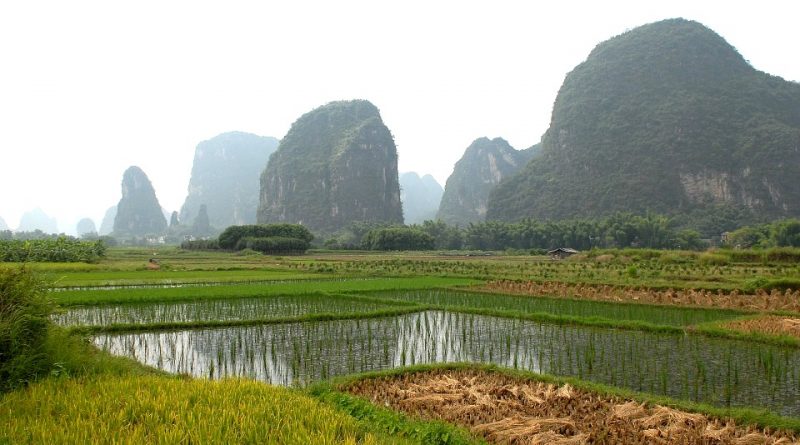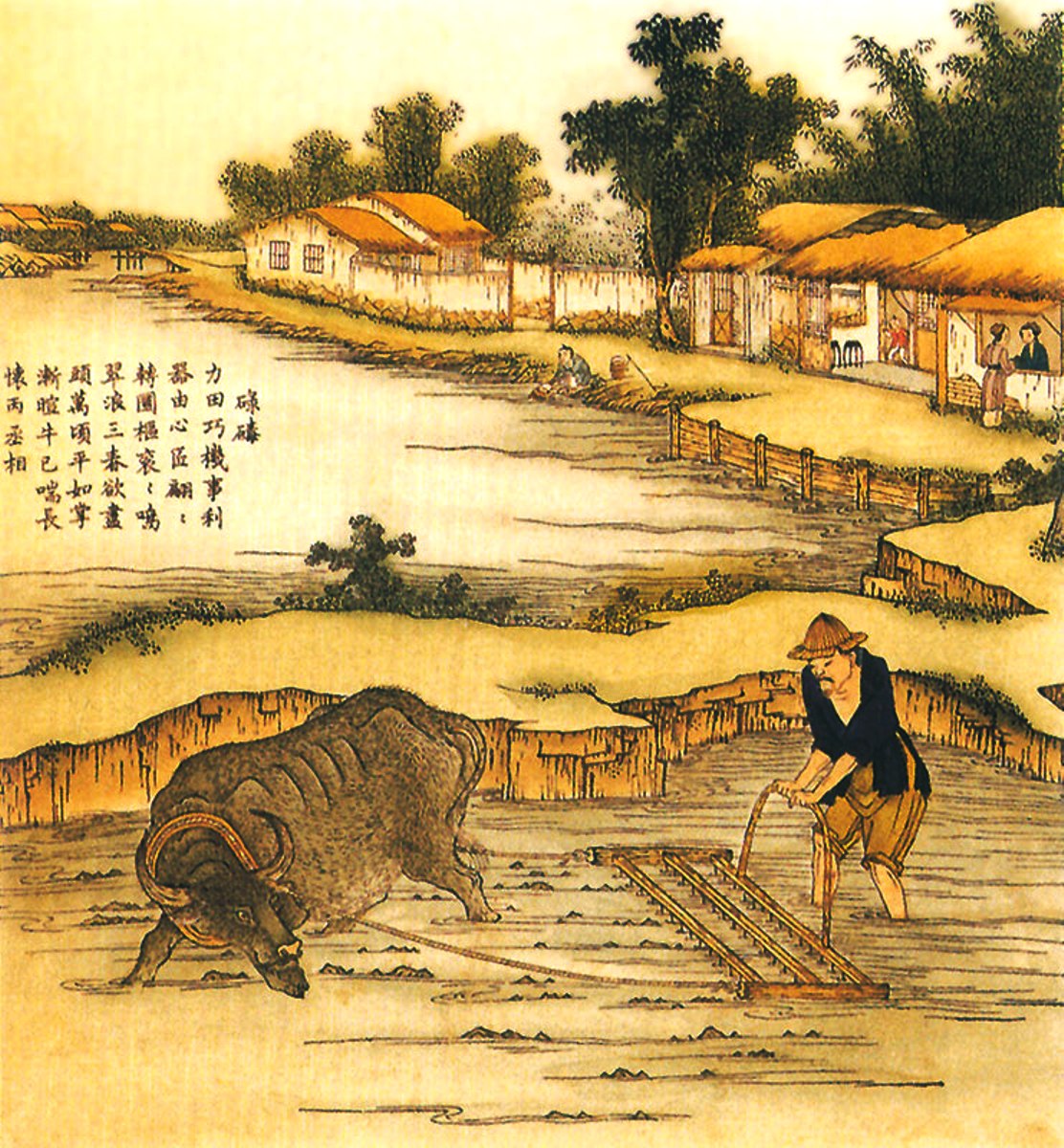Agriculture in ancient China – part I
Agriculture in ancient China – part I
The history of China dates back to ancient times, during the Neolithic era, and the first traces of civilization can be found in the small settlements built along the valleys of the Yellow River, which is considered the “cradle of Chinese civilization” and the Blue River .
The first information handed down to us dates back to the Shang dynasty (1700-1046 BC). The oracular bones, with the first Chinese characters of the Shang dynasty, have been dated around 1500 BC. Chinese culture, literature and philosophy began their development during the subsequent Zhou dynasty (1045-256 BC).
In parallel with the progress of Chinese civilization, the history of agriculture also evolves through the knowledge and techniques applied.
In general, however, the origins of Neolithic culture in China date back to 14 000-12 000 years ago. There is evidence of an ancient Chinese agriculture, based on the cultivation of millet, dated with radiocarbon at 7 000 BC and associated with the Peiligang (裴李崗文化) culture of Xinzheng county (新鄭 縣), in the province of Henan (河南省), following excavations in 1977.
It was agriculture that allowed an increase in population, given the ability to store resources; the first figures of administrators and artisans also appeared. In the late Neolithic the Yellow River valley (Huáng Hé 黃河) became the center of Yangshao culture, which developed between 5000 and 3000 BC. Among the settlements of this period the most significant from the archaeological point of view is the one found at Banpo (半坡), in the Xi’an (西安). In this period of Chinese history the written documentation is very lacking, but it is known that towards 7 000 BC cereal cultivation had given rise to the Jiahu culture. In Damaidi, in Ningxia, 3 172 rupestrian inscriptions dated to 6 000-5 000 BC have been discovered, representing 8 453 elements such as the sun, the moon, the stars, the gods and scenes of hunting or grazing. These pictograms are considered to be similar to the oldest Chinese written characters hitherto ascertained.
In a later phase of the Neolithic, between 3000 and 2000 BC, the culture of Longshan spread, based in the lower and middle Yellow River. During the period of the Lóngshān culture began the construction of cities, with walls of compacted earth and ditches. The site of Taosi is the largest fortified settlement of Longshan culture. The artisans of this culture knew the use of the lathe and produced pottery of very high quality. Rice cultivation was already widespread, and silkworm cultivation and silk production was already practiced.
It was however the period of the Han dynasty (206 BC-220 AD) to witness the formation of an agrarian economy characterized by the establishment of small farms with intensive cultivation, included in a system of commercial exchanges. This type of economic organization took shape gradually thanks to a positive interaction between technological progress and political orientation of the State towards agriculture. This organization has remained unchanged for many centuries in Chinese history and has contributed to making both the cultural and socio-economic system of China stable until the 19th century, when the entrance of the modern industrial economy has deeply transformed its traditions.
In fact, the Han agrarian economy has more remote origins and dates back to the period called “of the Spring and Autumn” (770-481 BC) and subsequently to the period of the fighting States (480-221 BC). In this sense the collapse of feudalism and the spread of iron tools and machine tools contributed to changing the old systems and techniques.
This period corresponds to the end of the Zhou dynasty (XI century-221 BC), in a period ranging from the VIII to the V century. a.C., and of the feudal system; it was thus that the land was divided into small estates and worked by individual farmers.
The presence of iron tools and machine tools allowed, in addition to easier cultivation of the fields, the expansion of the arable lands and the increase in yields, thanks to the implementation of irrigation infrastructures, including areas such as the irrigation of the basin of the city of Chengdu (Sichuan) through the irrigation network of the Dujiangyan dam, built between 351 and 306 BC.
All this obviously led to a demographic redistribution, a change in trade and an evolution of Chinese civilization.
An even more significant phenomenon was the vast concentration of the population in the central area of the Empire, especially in the provinces bordering the capital and in the central plains of the lower-middle stretches of the Yellow River.
This is confirmed by the high cost of land in this area; among the above this high relationship between human presence and land made the intensification of cultivation possible and feasible.
The address to agricultural activities was born before the Han dynasty who, in fact, inherited it from their predecessors Qin (221-206 BC).
On the other hand, agriculture was the main source of state revenue; not by chance, in fact, the Ministry of Finance in this period was called ‘Great Ministry of Agriculture’ and ‘Diligent Farmer’ was one of the honorary titles attributed to local notables for particular merits, such as ‘Filial Son’ and ‘Incorruptible’, used for candidates for government services. These titles, over time, were gradually used to designate simple honorary positions, and are comparable to that of the Justice of the Peace of England today.
To implement virtuous agricultural development policies, the Han dynasty applies targeted tax policies:
– in 155 BC the taxes (which corresponded to a thirteenth of the harvest) were reduced;
– to make the acres of arable land available, the State ceded lands over which it held control, with the aim of cultivating them;
– migrations towards the less populated regions were encouraged and also organized and planned;
– Following a practice already adopted during the period of the fighting States, the Han government began to carry out water control projects in order to reclaim the land, irrigate the fields and transport the grains.
Guido Bissanti


